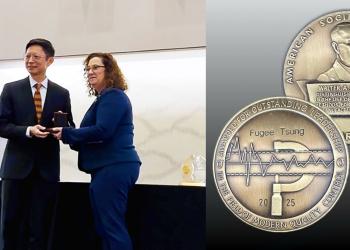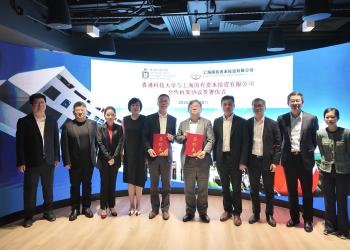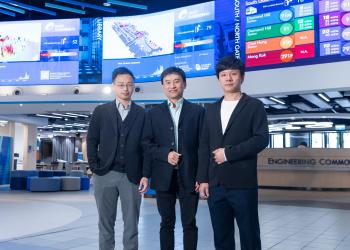High Time for Clarity on Sea Emissions
By Prof. Ning Zhi, Associate Professor of Environment and Sustainability
Marine emissions account for 40 percent of air pollution sources in Hong Kong - making them one of the city's most significant pollutant sources.
Given the SAR's status as one of the busiest ports in the world, enforcing clean fuel laws is absolutely essential in our quest to clean up our air.
Traditionally, policing high sulfur fuel usage is a time-consuming affair: checking ship logs, collecting samples from fuel tanks, taking them back to the lab and then conducting analyses. This process takes days and even weeks.
By the time these measurements are complete, the ships are likely to be already far from Hong Kong.
Regulators have been looking for a more efficient solution to detect and screen the vessels violating the fuel sulfur cap regulations.
This year, my team at HKUST is partnering with the Environmental Protection Department for the first trials of drone-mounted sensors that can measure a range of ship emission pollutants with sulfur dioxide being the primary pollutant of interest.
This pollutant is formed as the sulfur-containing fuel is burned to power the ships. It can harm health and also has important environmental impact.
Using the algorithm developed from my team, we can determine in real time the fuel sulfur content from remote measurements inside the ship plumes.
Instead of random selection and complex testing of marine vessels as in the past, this new solution enables us to quickly screen out, among a large fleet of vessels, the ones that are most likely to flout new stringent regulations that came into force in January.
It stipulates all ocean-going vessels in Hong Kong waters must use fuel with a sulfur content below 0.5 percent.
Vessels that fail to pass the screening will then be scrutinized further by the EPD using lab methods for evidence of jurisdiction.
Our team has been developing next-generation sensor-based technologies over the past years for measuring pollutants in urban air.
The drone-mounted sensor is the newest example of such an innovation with small, light and fast measurement capabilities into ultra-compact system that weighs less than 800g but can simultaneously monitor eight to nine different pollutants emitted from a plume in minutes.
The sensor package would work even on a lightweight seven-kilogram drone that includes infrared cameras to ensure the drone flies within the plume, even on windy days.
Drone-based sensors have other potential uses beyond detecting marine air pollution.
It can be employed to measure complex 3D urban environment air quality; authorities can also use these drones to ensure emissions from power plants and factory chimneys are compliant with emission regulations. As sensor technology continues to advance, I expect to see personal hand-held and wearable sensors in the size of a smartphone very soon.
The article was published on The Standard on May 15, 2019.









